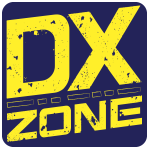First full weekend in March (March 7-8, 2020).
Starts 0000 UTC Saturday; ends 2359 UTC Sunday.
Objective: To encourage W/VE stations to expand knowledge of DX propagation on the HF and MF bands, improve operating skills, and improve station capability by creating a competition in which DX stations may only contact W/VE stations.
W/VE amateurs: Work as many DX stations in as many DXCC entities as possible on the 160, 80, 40, 20, 15, and 10 meter bands.
DX stations: Work as many W/VE stations in as many of the 48 contiguous states and provinces as possible.
Bands
160, 80, 40, 20, 15, and 10 Meters. No contest QSOs may be made on 12, 17, 30 or 60 Meters.
3. Entry Categories:
3.1. Single Operator:
The use of spotting assistance or automated, multi-channel decoders is NOT permitted.
3.1.1. QRP: 5 watts transmitter output or less.
3.1.2. Low Power: 150 watts transmitter output or less.
3.1.3. High Power: Maximum transmitter output of 1500 watts or license limit, whichever is less.
3.2. Single Operator Unlimited:
The use of spotting assistance or automated, multi-channel decoders is permitted.
3.2.1. QRP: 5 watts transmitter output or less.
3.2.2. Low Power: 150 watts transmitter output or less.
3.2.3. High Power: Maximum transmitter output of 1500 watts or license limit, whichever is less.
3.3. Single Operator, Single Band
3.3.1. A participant may submit only one Single Band entry. If contacts are made on other bands, the log header or summary sheet must declare the entry as Single Band.
3.3.2. Only one Single Band entry may be submitted for a specific call sign.
3.3.3. There are no power sub-categories for Single Band entries.
3.3.3. Single Band entries are NOT permitted to use spotting assistance. Use of spotting assistance will cause the entry to be reclassified to the Single Operator Unlimited, High Power category.
3.4. Multioperator:
3.4.1. Single Transmitter. No more than one transmitted signal is allowed at any given time; alternating CQs on two or more frequencies using the same band and mode is prohibited.
3.4.1.1. High Power: Maximum transmitter output of 1500 watts or license limit, whichever is less.
3.4.1.2. Low Power: 150 watts transmitter output or less.
3.4.2. Two Transmitter. No more than two transmitted signals are allowed at any given time; alternating CQs on two or more frequencies using the same band and mode is prohibited.
3.4.2.1. There are no power sub-categories for Two Transmitter entries.
3.4.2.2. Two Transmitter sub-category entries must identify the transmitter making the contact in the submitted electronic log according to the Cabrillo format standard or by an unambiguous notation in a paper log.
3.4.3. Multitransmitter. A maximum of one transmitted signal per contest band at any given time is permitted; alternating CQs on two or more frequencies using the same band and mode is prohibited.
3.4.3.1. There are no power sub-categories for Multitransmitter entries.
3.4.4 Band Changes. Single Transmitter and Two Transmitter sub-category entries are limited to six (6) band changes per clock hour per transmitter.
3.4.4.1 Clock hours are counted from 00-59 minutes, not as any 60 consecutive minutes.
3.4.4.2 A band change consists of two consecutive contacts on different bands. For example, a change from 20 meters to 40 meters and then back to 20 meters constitutes two band changes. Violation of the Band Change rule or improper logging will result in an entry reclassification to the Multioperator, Multitransmitter class.
4. Contest Exchange:
4.1. W/VE stations send signal report and state or province.
4.2. DX stations send signal report and power (number or abbreviation indicating approximate transmitter output power).





